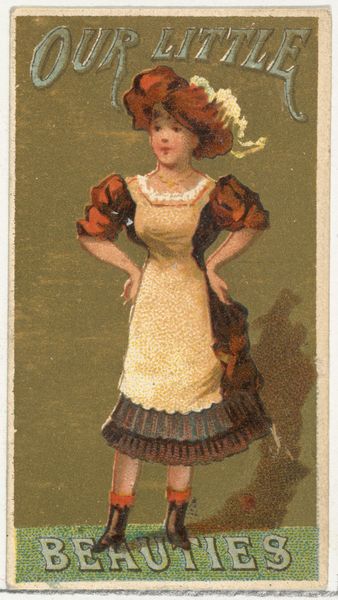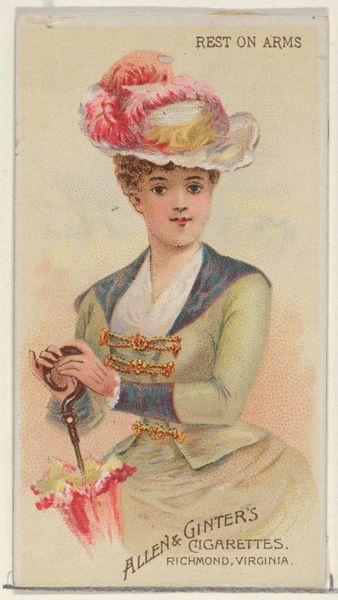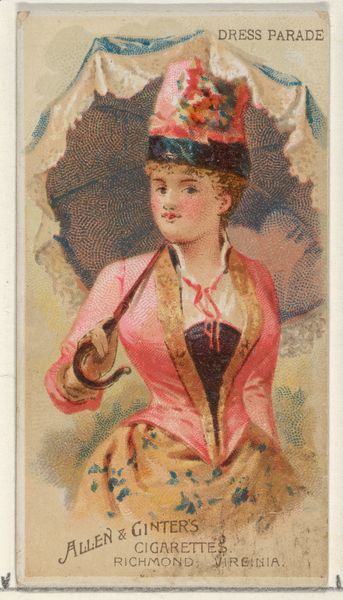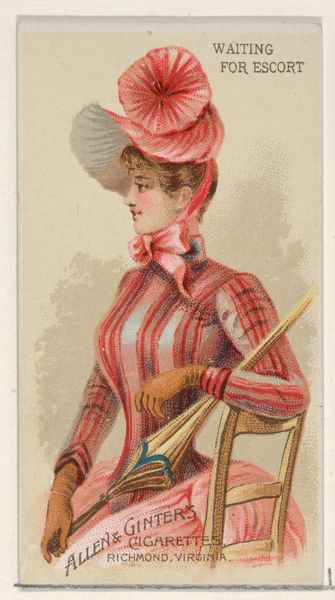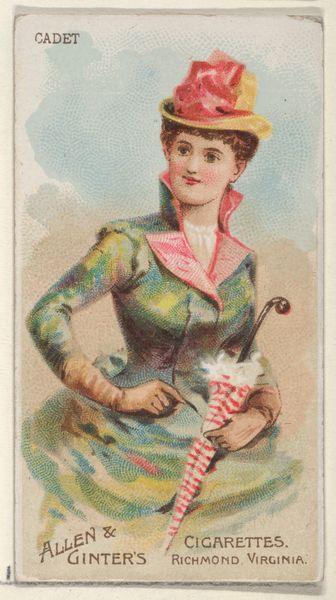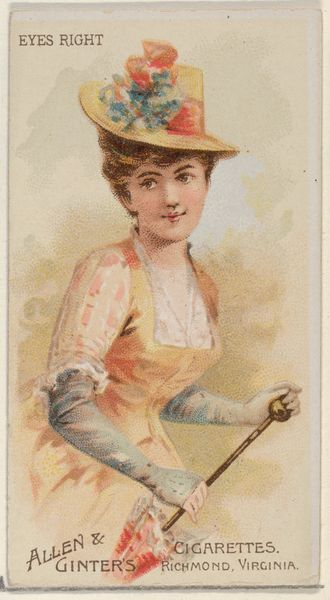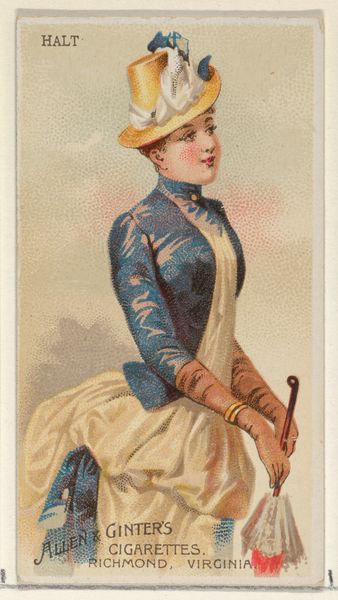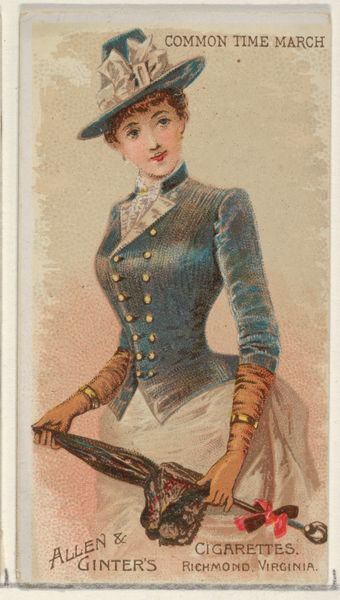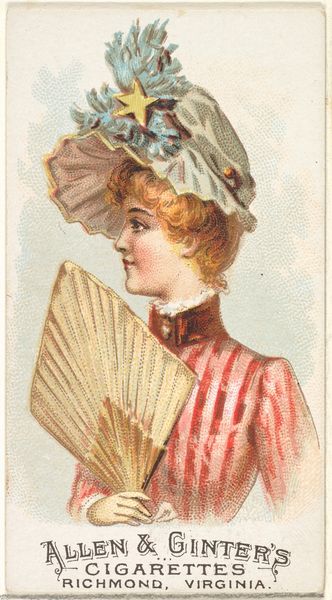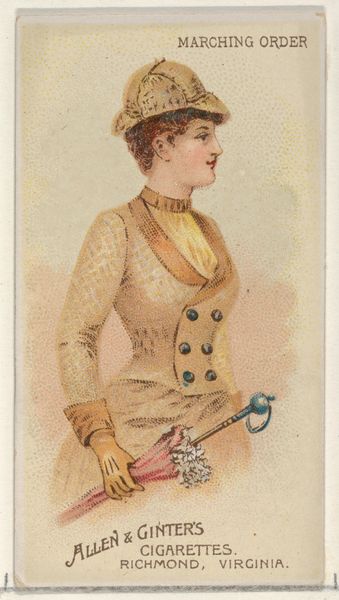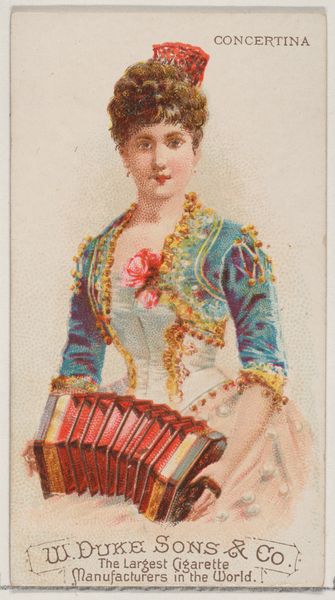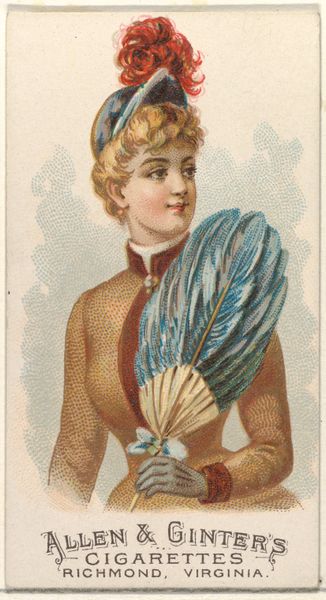
Order Arms, from the Parasol Drills series (N18) for Allen & Ginter Cigarettes Brands 1888
0:00
0:00
drawing, coloured-pencil, print
#
portrait
#
drawing
#
coloured-pencil
# print
#
coloured pencil
#
genre-painting
Dimensions: Sheet: 2 3/4 x 1 1/2 in. (7 x 3.8 cm)
Copyright: Public Domain
Curator: Before us is “Order Arms, from the Parasol Drills series (N18) for Allen & Ginter Cigarettes Brands,” a print and colored pencil work from 1888, currently housed at the Metropolitan Museum of Art. What strikes you initially? Editor: The subtle coloration and detailed linework of this portrait convey an unexpected delicate charm. It has an intimate feeling despite its source as cigarette advertising. Curator: Yes, let's consider its composition. The figure, centrally positioned, is rendered with precise, almost photographic realism above the waste. Below this, there is some ambiguity. The rendering of light plays off of the colors in such a way that it feels like the colors are bleeding into each other as the illustration trails down. Editor: That's intriguing! Allen & Ginter created a collectable card; considering its original function affects my view. What sort of labour and materials went into the mass production of such a delicately colored item? It definitely challenges any notion that "high art" materials like pencils or paints would not also be used for the mundane, mass-produced images of commerce. Curator: Absolutely. We can't overlook the parasol she’s holding, mimicking a rifle. The print engages in an act of encoding gender into power in surprising ways through these semiotic objects. It is almost as if a Victorian rifle could become feminized as something both decorative and useful when carried by this feminine form. Editor: The blending of luxury and the everyday really stands out. Even down to the branding. It asks us to connect leisure and habit—especially how class aspiration could be purchased along with your tobacco. Thinking of the factory environment in which these would be packaged and produced changes how I feel about her delicate posture and serene expression. Curator: It underscores how material and historical context can powerfully reshape our aesthetic understanding. By dissecting both form and manufacture, we gain access into both the artistic object and a lens into social stratifications, as well as the very labor used to create our experience with the piece. Editor: Indeed. A testament to looking beyond initial impressions, interrogating materiality, form, and societal roots, as that, truly, enhances our comprehension of art and visual culture.
Comments
No comments
Be the first to comment and join the conversation on the ultimate creative platform.
